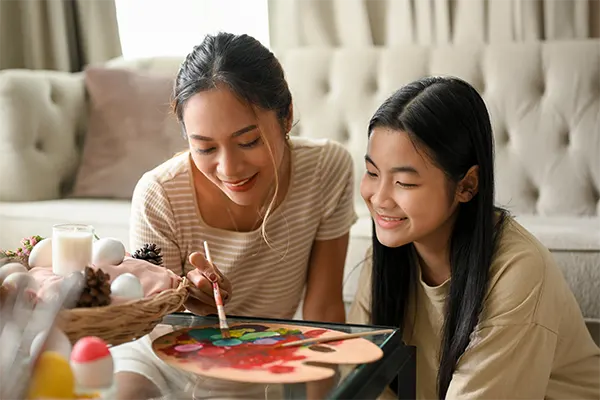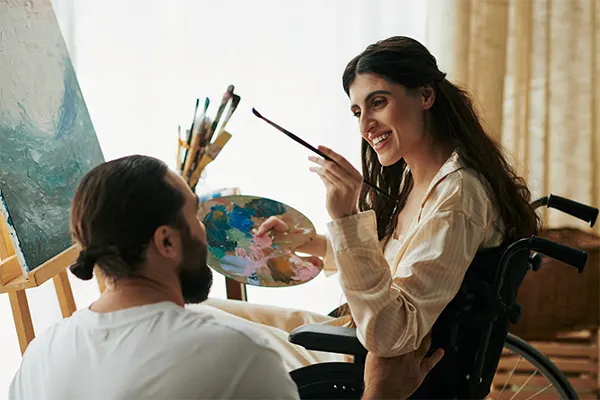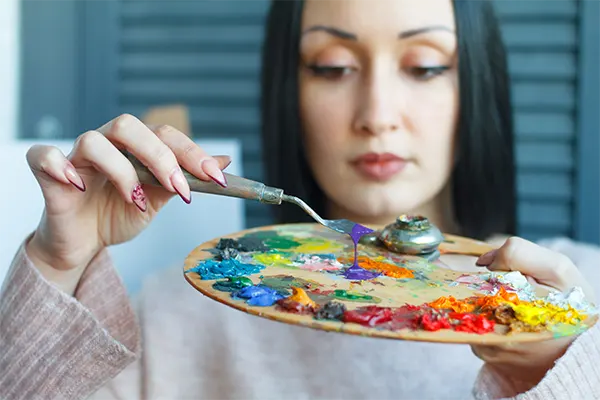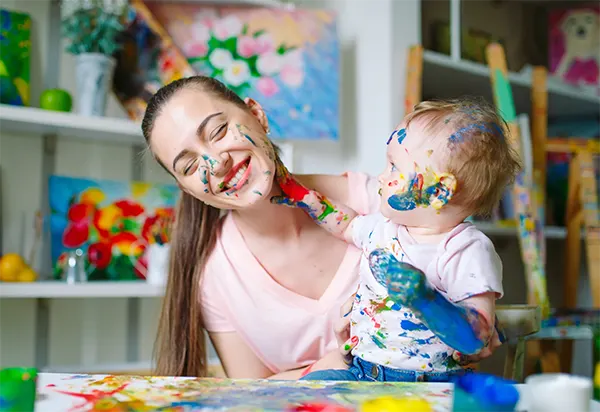In an increasingly fast-paced world where mental health challenges are becoming more prevalent, finding effective, innovative therapeutic approaches is crucial. Art therapy has emerged as a transformative solution for many individuals seeking to enhance their mental well-being. This powerful modality leverages creative processes to promote emotional, psychological, and social healing. In this comprehensive article, we will explore the transformative power of art therapy for mental health, delving into its origins, benefits, techniques, and real-life applications. By the end, you’ll understand why art therapy is gaining recognition as a vital component in the mental health field.
The Origins of Art Therapy
Art therapy is not a new concept; its roots can be traced back to ancient civilizations where art was used for communication, healing, and rituals. However, as a formal therapeutic practice, art therapy began to take shape in the mid-20th century. Pioneers like Adrian Hill, an artist and a patient in a sanatorium, discovered the therapeutic benefits of drawing and painting during his recovery from tuberculosis. His experiences and the work of other early proponents like Margaret Naumburg and Edith Kramer helped establish art therapy as a recognized discipline.
What is Art Therapy?
Art therapy is a form of psychotherapy that uses art media as its primary mode of expression and communication. It involves the creation and analysis of visual art to explore thoughts, emotions, and experiences. Unlike traditional talk therapy, art therapy allows individuals to express themselves in a non-verbal way, which can be particularly beneficial for those who find it difficult to articulate their feelings. Licensed art therapists, who are trained in both art and psychology, facilitate this process, guiding clients through creative activities and helping them interpret the symbolic meanings of their artwork.

The Science Behind Art Therapy
The effectiveness of art therapy is supported by a growing body of scientific research. Neuroscience has shown that engaging in creative activities can activate various regions of the brain, fostering connections between the left and right hemispheres. This cross-hemispheric interaction enhances cognitive flexibility, emotional regulation, and problem-solving abilities. Furthermore, creating art can stimulate the release of dopamine, a neurotransmitter associated with feelings of pleasure and reward. This biological response can alleviate symptoms of depression, anxiety, and stress.
Benefits of Art Therapy for Mental Health

1. Emotional Expression and Regulation
One of the most significant benefits of art therapy is its ability to facilitate emotional expression. Many individuals, especially those who have experienced trauma, may struggle to verbalize their feelings. Art provides a safe and non-threatening outlet for expressing emotions that might be too difficult to put into words. By externalizing their inner experiences, clients can gain insight into their emotions and learn healthier ways to manage them.
2. Stress Reduction and Relaxation
Engaging in creative activities can induce a state of flow, a psychological condition where individuals become fully immersed and focused on the task at hand. This state of flow is often accompanied by a sense of calm and relaxation, which can significantly reduce stress levels. Art therapy sessions encourage mindfulness, allowing clients to disconnect from their worries and immerse themselves in the present moment.
Visit: how to improve digital resilience
3. Self-Discovery and Personal Growth
Art therapy encourages self-exploration and self-discovery. Through the creative process, individuals can uncover hidden aspects of their personality, values, and beliefs. This increased self-awareness can lead to personal growth and a deeper understanding of oneself. Art therapy also fosters a sense of accomplishment and self-efficacy as clients witness their progress and achievements in their artwork.
4. Enhanced Cognitive Functioning
Creating art can improve cognitive functioning by stimulating various mental processes. It enhances fine motor skills, spatial awareness, and problem-solving abilities. For individuals with cognitive impairments, such as those with dementia or traumatic brain injuries, art therapy can provide cognitive stimulation and improve overall brain health.
5. Building Resilience and Coping Skills
Art therapy can help individuals build resilience and develop effective coping skills. The creative process allows clients to experiment with different approaches to problem-solving and adapt to challenges. This practice can translate into real-life situations, equipping individuals with the tools they need to navigate stressors and adversity. Empower yourself with the personality development skills to succeed: join our program now!

6. Social Connection and Support
Participating in group art therapy sessions can foster a sense of community and social connection. Sharing creative experiences with others can reduce feelings of isolation and loneliness, providing a supportive environment where individuals can relate to one another. Group settings also offer opportunities for social learning and the development of interpersonal skills.
Techniques and Approaches in Art Therapy
Art therapy encompasses a wide range of techniques and approaches, each tailored to meet the unique needs of clients. Here are some common methods used in art therapy:

1. Drawing and Painting
Drawing and painting are foundational techniques in art therapy. These activities allow clients to express their thoughts and emotions visually. The choice of colors, shapes, and lines can provide valuable insights into the client’s inner world. Therapists may use prompts or themes to guide the creative process, helping clients explore specific issues or emotions.
2. Collage
Collage involves creating images by assembling different materials, such as photographs, magazine cutouts, and fabric. This technique can be particularly useful for clients who feel overwhelmed by the blank canvas. Collage allows for the juxtaposition of different elements, symbolizing the complexity of emotions and experiences.
3. Sculpting and Clay Work
Sculpting and working with clay engage clients in a tactile and sensory experience. The process of molding and shaping materials can be therapeutic, providing a physical outlet for emotions. Sculpting can also represent transformation and change, as clients manipulate the material to create new forms.
4. Mandala Creation
The creation of mandalas, intricate circular designs, is a technique rooted in ancient spiritual practices. Mandalas are often used in art therapy to promote relaxation and meditation. The repetitive patterns and symmetry of mandalas can induce a state of calm and focus, aiding in stress reduction and emotional regulation.
5. Journaling and Visual Diaries
Combining visual art with written expression, journaling and visual diaries allow clients to document their thoughts, feelings, and experiences over time. This technique provides a comprehensive view of the client’s emotional journey and can be a valuable tool for self-reflection and growth.
6. Digital Art
Incorporating technology, digital art therapy uses digital tools and software to create art. This approach can be appealing to tech-savvy clients and offers a different medium for expression. Digital art therapy can also be accessible for individuals with physical limitations that make traditional art-making challenging.
Visit: drama therapy techniques
Real-Life Applications and Success Stories
Art therapy has been successfully applied in various settings and populations, demonstrating its versatility and effectiveness. Here are a few real-life applications and success stories:
1. Trauma and PTSD
Art therapy has proven to be particularly beneficial for individuals with trauma and post-traumatic stress disorder (PTSD). For example, veterans returning from combat often struggle with traumatic memories and emotional distress. Art therapy provides a safe space for these individuals to process their experiences and express their feelings non-verbally. One notable success story is the use of art therapy in the “Combat Paper Project,” where veterans transform their uniforms into paper and create art, symbolizing their transition from soldier to civilian.
2. Children and Adolescents
Art therapy is widely used with children and adolescents, who may find it challenging to articulate their emotions verbally. In schools, art therapy programs have helped students cope with stress, bullying, and academic pressures. For instance, the “Room 13” project in Scotland established student-led art studios in schools, empowering young people to express themselves creatively and improve their mental well-being. Boost your confidence and communication skills with expert-led personality development training!

3. Substance Abuse and Addiction Recovery
In addiction recovery programs, art therapy has been used to support individuals in their journey to sobriety. Creative activities can serve as a healthy outlet for emotions and a means of exploring the underlying issues contributing to substance abuse. Art therapy can also help individuals build a new identity and sense of purpose in recovery. One success story is the “Artists in Recovery” program, where participants create art to express their recovery experiences and share their stories with the community.
4. Chronic Illness and Pain Management
For individuals with chronic illnesses and pain, art therapy can provide relief and improve quality of life. The creative process can serve as a distraction from physical discomfort and a means of coping with the emotional toll of illness. Hospitals and healthcare facilities have incorporated art therapy into their treatment plans, with programs like “Arts in Medicine” demonstrating positive outcomes for patients.
5. Mental Health Institutions and Community Centers
Art therapy is also utilized in mental health institutions and community centers to support individuals with severe mental health conditions. In these settings, art therapy can aid in the stabilization of symptoms, improve communication, and enhance overall well-being. The “Creative Arts Therapy Program” at Bellevue Hospital in New York City, for example, offers a range of art-based interventions to support patients’ mental health and recovery.
Visit: how to build positive self esteem
Conclusion
Art therapy for mental health has proven to be a powerful and effective approach to healing and personal growth. By harnessing the creative process, individuals can express their emotions, reduce stress, enhance self-awareness, and develop coping skills. The versatility and accessibility of art therapy make it a valuable tool for diverse populations and settings. As we continue to explore the transformative power of art therapy for mental health, it is essential to recognize its potential to positively impact lives and promote overall well-being. Whether you are a mental health professional, a client, or simply someone interested in exploring new avenues for emotional expression, art therapy offers a unique and meaningful path to healing and growth.


